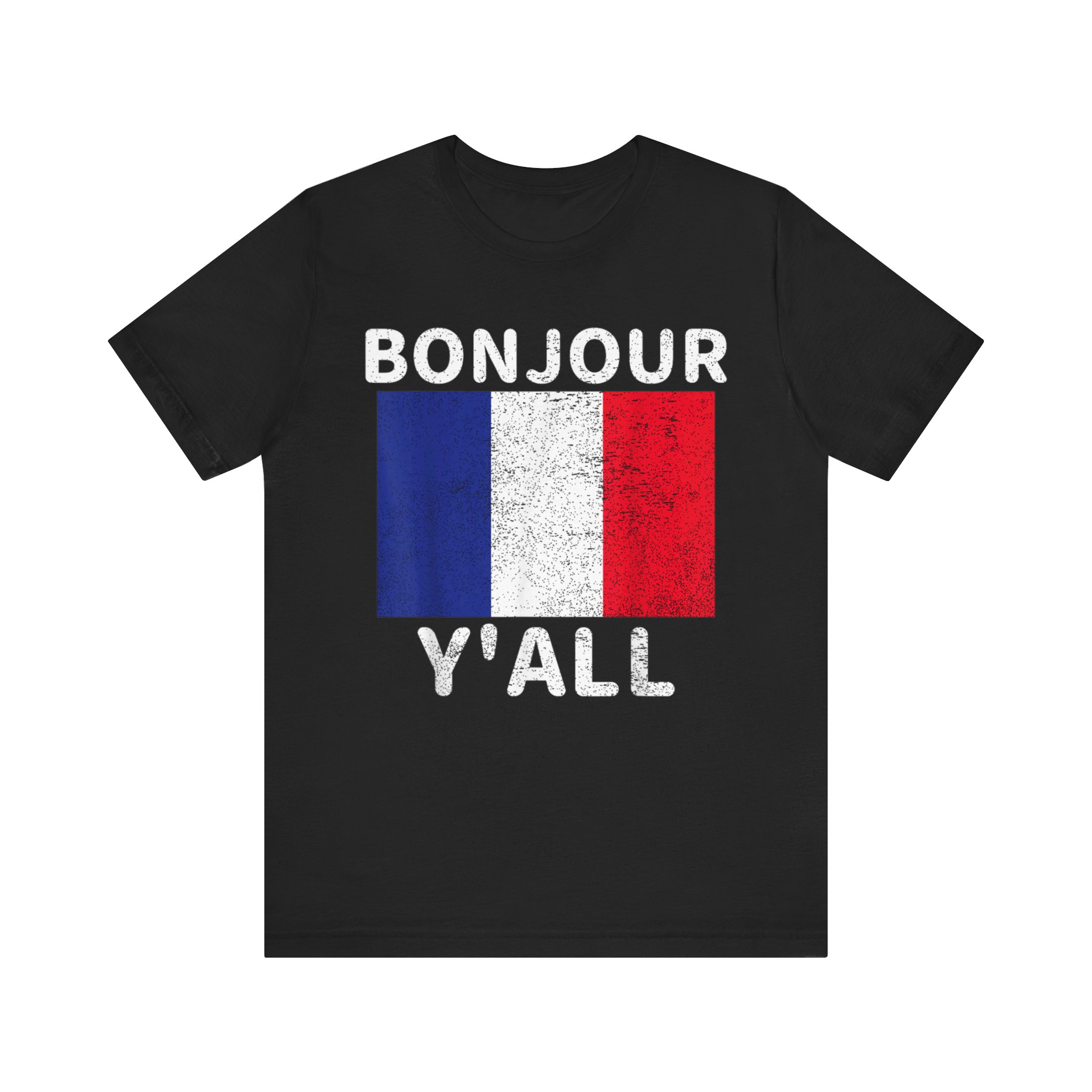France, a country known for its rich history, artistic legacy, and culinary delights, comes alive in a kaleidoscope of colors, music, and festivities during its numerous cultural celebrations. From traditional events deeply rooted in history to contemporary festivals that showcase the nation’s dynamic spirit, the French calendar is a vibrant tapestry of tradition. Join us on a journey through the heart of France’s festivals, where each celebration is a testament to the country’s cultural diversity and joie de vivre.
1. Bastille Day (14th July): A National Spectacle
Bastille Day, celebrated annually on the 14th of July, stands as a luminous testament to France’s indomitable spirit, an ode to its tumultuous past, and a vibrant expression of the nation’s commitment to liberty, equality, and fraternity. Beyond being a historical milestone, Bastille Day has evolved into a grand spectacle that captivates hearts, ignites national pride, and brings communities together in a joyous celebration of freedom.
a. The Historical Significance: Commemorating the Birth of the Republic
At the core of Bastille Day lies a pivotal moment in history—the storming of the Bastille on July 14, 1789. The Bastille, a symbol of royal tyranny and oppression, became the focal point of the nascent French Revolution. The storming of this fortress not only marked the triumph of the people over autocracy but also heralded the birth of the French Republic and the principles that continue to define the nation’s identity.
b. Grand Parades: A Theatrical Display of Unity and Strength
The beating heart of Bastille Day manifests in the grandeur of parades that cascade through the streets of Paris and other cities. The iconic Champs-Élysées transforms into a stage for an extraordinary display of unity, as regiments, cavalry, and military precision take center stage. Marching in unison, adorned in resplendent uniforms, the French armed forces showcase their strength, discipline, and the unwavering commitment to safeguarding the values enshrined in the Republic.
c. Fireworks over the Eiffel Tower: Illuminating the Night Sky
As the sun sets on Bastille Day, the Eiffel Tower becomes a beacon of splendor, serving as the backdrop for a dazzling fireworks extravaganza. The night sky is set ablaze with brilliant bursts of color and light, choreographed to music that echoes across the Seine River. Thousands gather in awe, creating a collective experience that transcends generations, evoking a sense of shared wonder and pride.
d. Street Festivals and Local Celebrations: A Tapestry of Community Spirit
From the bustling boulevards of Paris to the quaint villages dotting the French countryside, Bastille Day unfolds as a tapestry of community spirit. Street festivals come alive with live music, street performances, and the tantalizing aromas of traditional French delicacies. The air is charged with the joyous laughter of families, the melodies of street musicians, and the communal revelry that defines the essence of Bastille Day.
e. Firemen’s Balls: Dance, Camaraderie, and Civic Bonding
An endearing tradition associated with Bastille Day is the Firemen’s Balls, known as Bals des Pompiers. Fire stations across the country open their doors to the public, transforming into lively dance venues. Locals, tourists, and firefighters come together to dance into the late hours, fostering a sense of camaraderie and reinforcing the bond between the community and those who serve to protect it.
f. Reflection and Pride: Nurturing National Identity
Bastille Day is not merely a day of festivities; it is a moment for introspection, a time when the French people reflect on their shared history and recommit to the principles that form the bedrock of the Republic. It is a day to take pride in the journey from revolutionary upheaval to the establishment of a nation that champions liberty, equality, and fraternity—a nation that has weathered storms and emerged resilient, holding its head high on the global stage.
g. Cultural Events and Artistic Expressions: Celebrating Diversity
Beyond the traditional spectacles, Bastille Day also embraces cultural events and artistic expressions. Galleries, theaters, and cultural institutions host exhibitions and performances that showcase the richness and diversity of French culture. This infusion of the arts into the celebration adds layers of depth, inviting both locals and visitors to appreciate the multifaceted tapestry of French heritage.
h. Community Engagement and Citizenship Ceremonies: Inclusion and Civic Pride
Bastille Day is a moment for community engagement and civic participation. Citizenship ceremonies are conducted, welcoming new members into the French community. These ceremonies symbolize the inclusive nature of the Republic, where diversity is celebrated, and individuals from various backgrounds become integral threads in the intricate fabric of French society.
i. Educational Programs and Historical Reenactments: Connecting Generations
Educational programs and historical reenactments become avenues for connecting generations. Younger members of society learn about the significance of Bastille Day through interactive activities and engaging narratives. Historical reenactments transport audiences back in time, offering a visceral experience of the events that shaped the nation’s destiny.
j. Global Observance: Bastille Day Beyond Borders
While Bastille Day is a quintessentially French celebration, its impact reverberates globally. French expatriate communities, diplomatic missions, and international friends of France partake in the festivities. Embassies become venues for cultural exchange, showcasing the universal resonance of the values championed on this auspicious day.
2. Cannes Film Festival: Glamour on the French Riviera
The Cannes Film Festival, an annual extravaganza held in the radiant city of Cannes along the French Riviera, transcends its identity as a mere film festival. It stands as a beacon of cinematic brilliance, a convergence of global talent, and a celebration of glamour that transforms the city into a majestic stage for the world’s most influential filmmakers, actors, and cinephiles. Let’s delve deeper into the myriad facets that make the Cannes Film Festival an unparalleled spectacle.
a. A Riviera Rendezvous: The Opulent Setting
Cannes, renowned for its sun-drenched beaches and opulent surroundings, provides an idyllic backdrop for the festival. The iconic Palais des Festivals et des Congrès, situated on the bustling Boulevard de la Croisette, becomes the epicenter of creativity and sophistication. The festival’s venues, including the red carpet-laden staircase, exude an air of grandeur, immersing attendees in an atmosphere of artistic splendor.
b. Red Carpet Extravaganza: A Parade of Elegance
The Cannes red carpet is more than a ceremonial entrance; it is a hallowed runway where stars make their ascent, adorned in the epitome of haute couture. This scarlet path, flanked by the azure Mediterranean, transforms into a mesmerizing parade of elegance. Celebrities, draped in creations from the world’s most illustrious designers, captivate onlookers with their sartorial choices, creating moments that resonate in the annals of fashion history.
c. Film Premieres and Screenings: Cinematic Brilliance Unveiled
At its core, Cannes is a celebration of cinema. The festival premieres a diverse array of films—from avant-garde independent productions to major studio releases. Directors and actors eagerly await the audience’s response, as Cannes serves as a global stage for films to make their debut and potentially leave an indelible mark on the industry. The selection process is rigorous, ensuring that only the finest cinematic creations grace the Cannes screens.
d. Palme d’Or: The Ultimate Cinematic Accolade
The Palme d’Or, the highest honor awarded at Cannes, is a symbol of excellence in filmmaking. The anticipation leading up to the Palme d’Or announcement is palpable, with filmmakers and actors aspiring to have their work recognized as the pinnacle of artistic achievement. Winning the Palme d’Or catapults a film and its creators into cinematic immortality, etching their names in the illustrious history of Cannes.
e. Industry Networking and Deal-Making: A Global Hub for Film Professionals
Beyond the glittering façade, Cannes is a business hub for the film industry. The Marché du Film (Film Market) facilitates networking, deal-making, and collaboration among producers, distributors, and industry insiders. This dynamic marketplace transforms Cannes into a nexus where the business of filmmaking intersects with the creative process, fostering an environment ripe for international collaborations.
f. Fashion Statements and Brand Collaborations: The Intersection of Style and Cinema
Cannes is not merely a celebration of cinema; it is a marriage of film and fashion. Designers clamor for the opportunity to dress celebrities for their red carpet appearances. The festival becomes a canvas for couture, with fashion statements echoing across the globe. Brands align themselves with the glamour of Cannes, leveraging the festival as a platform for high-profile collaborations and endorsements.
g. Cultural Dialogues and Panel Discussions: Beyond the Silver Screen
Cannes expands beyond the screening rooms to foster intellectual dialogue. Panel sessions featuring industry experts, filmmakers, and thought leaders explore the cultural impact of cinema. Discussions delve into themes of societal relevance, artistic expression, and the evolving landscape of the film industry, adding a layer of intellectual depth to the festival’s festivities.
h. The Cannes Experience for Fans: A Glimpse of Cinematic Magic
While Cannes is an exclusive industry event, organizers ensure that the magic of cinema reaches a broader audience. Outdoor screenings, fan zones, and events open to the public provide locals and visitors with a taste of the Cannes experience. It is an opportunity for cinephiles to immerse themselves in the world of film, even if from a distance, creating a sense of inclusivity within the grandeur.
i. Cannes as a Cultural Catalyst: Shaping Cinematic Trends
Cannes wields influence as a cultural catalyst, shaping trends and impacting the trajectory of the film industry. Films that receive acclaim at Cannes often set the tone for discussions around storytelling, aesthetics, and cultural representation. The festival’s influence resonates long after its conclusion, leaving an enduring imprint on the global cinematic landscape.
j. Cannes as a Symbol of Prestige: A Benchmark for Excellence
Participating in the Cannes Film Festival is not just an accolade; it is a stamp of prestige that reverberates throughout a filmmaker’s career. A Cannes selection or award elevates a film’s status, garnering attention from audiences, critics, and industry professionals alike. Cannes becomes a benchmark for excellence, and films associated with the festival carry the cachet of having been showcased at one of the most prestigious events in the cinematic calendar.
3. Fête de la Musique (21st June): A Musical Celebration
Fête de la Musique, also known as World Music Day, stands as a harmonious crescendo of celebration, an annual musical phenomenon that orchestrates a global symphony on the 21st of June. Originating in France in 1982, this cultural initiative has transcended its national boundaries, evolving into a vibrant celebration of music’s universal language. The festival transforms streets, parks, and public spaces into resonant stages, where the world comes together to revel in the magic of music. Let’s immerse ourselves in the multifaceted celebration that is Fête de la Musique.
a. The Summer Solstice Symphony: A Global Celebration of Music
Fête de la Musique aligns itself with the rhythms of nature, marking the arrival of summer with a resounding symphony that spans the globe. What began as a French cultural initiative has evolved into a worldwide celebration, emphasizing inclusivity and artistic expression. The 21st of June becomes a canvas for a diverse array of musical genres, creating a mosaic of soundscapes that reflects the global tapestry of musical tastes and cultural influences.
b. Street Music Festivals: Where Every Corner Becomes a Stage
The unique charm of Fête de la Musique lies in its grassroots approach to music. Streets, squares, and alleyways become impromptu stages, hosting a multitude of performances that blur the lines between amateurs and professionals. The festival democratizes music, turning ordinary corners into vibrant stages where classical ensembles, jazz bands, solo artists, and experimental musicians all coalesce to create a dynamic and unpredictable musical landscape.
c. Diverse Musical Genres: A Melodic Mosaic
At the heart of Fête de la Musique is a celebration of diversity. The festival embraces an eclectic range of musical genres, ensuring there’s something for every ear. From the timeless notes of classical compositions to the improvisational jazz, the pulsating beats of electronic music, the raw energy of rock, and the cultural richness of traditional folk genres, Fête de la Musique encapsulates the entire spectrum of musical expression.
d. Community Participation: Musicians and Music Lovers Unite
Fête de la Musique dismantles the traditional barriers between performers and the audience. Amateurs and professionals, seasoned musicians and novices, all come together in a spirit of communal joy. The festival actively encourages participation, whether through organized performances on designated stages or spontaneous jam sessions that emerge in the most unexpected places. It is a day when the distinction between the stage and the crowd dissolves, and everyone becomes a part of the grand musical tapestry.
e. Cultural Impact: Fostering Artistic Expression and Unity
Beyond its festive ambiance, Fête de la Musique carries cultural significance as a platform for fostering artistic expression and unity. The festival provides a space for artists to showcase their unique voices and encourages the exploration of diverse musical traditions. It serves as a cultural bridge, connecting people through the shared language of music and promoting a sense of community that transcends geographical and cultural boundaries.
f. Music Education Initiatives: Nurturing Future Talents
Fête de la Musique extends its impact beyond a one-day celebration, actively contributing to the nurturing of future musical talents. Many events include music education initiatives, workshops, and opportunities for aspiring musicians to showcase their skills. This commitment to education ensures that the festival leaves a lasting legacy, inspiring the next generation of artists and cultivating a deeper appreciation for the transformative power of music.
g. Digital Engagement: Connecting Globally
In the digital age, Fête de la Musique has embraced online platforms to expand its reach. Live streams, virtual performances, and social media engagement allow people from different corners of the world to participate in the festivities. This digital dimension enhances the global connectivity of the celebration, enabling music lovers to share their experiences, discoveries, and favorite performances in real-time.
h. Night Becomes a Canvas: Nocturnal Musical Revelry
As the sun sets on the longest day of the year, Fête de la Musique transitions seamlessly into a nocturnal celebration. Nighttime performances, illuminated stages, and the ambiance of city lights create a magical backdrop for musical revelry. The festival’s spirit endures into the moonlit hours, providing a different yet equally enchanting experience for those who choose to explore the nighttime melodies.
i. Economic Impact: Supporting Local Businesses
Fête de la Musique contributes not only to the cultural vibrancy of communities but also to the economic well-being of local businesses. Cafés, restaurants, and shops become integral to the festival experience as they host performances or extend their hours to accommodate the influx of music enthusiasts. This symbiotic relationship enhances the sense of community and underscores the festival’s positive impact on local economies.
j. Sustainable Practices: Harmonizing with the Environment
In recent years, Fête de la Musique has taken steps to incorporate sustainable practices. From eco-friendly stages to initiatives promoting public transportation and waste reduction, the festival aligns with environmental consciousness. This commitment to sustainability ensures that the celebration not only resonates in musical notes but also harmonizes with the principles of ecological responsibility.
4. La Chandeleur: Crepes and Candlelight
La Chandeleur, celebrated on the 2nd of February, emerges as a delightful intersection of culinary artistry, symbolism, and communal joy. While rooted in religious traditions, this French festival has gracefully evolved into a secular celebration that embraces the promise of spring, symbolized by the making and indulging in crepes. La Chandeleur is not merely a feast; it is a sensory journey, a celebration of light and flavor that captivates the senses. Let’s embark on a deeper exploration of the multifaceted celebration that is La Chandeleur.
a. Pancakes Galore: The Art of Crepe-Making
At the heart of La Chandeleur lies the art of crepe-making—a culinary ritual that transforms kitchens into bustling hubs of creativity. The delicate, thin pancakes become a canvas for culinary exploration. Families and friends gather to showcase their crepe-flipping skills, experimenting with an array of sweet and savory fillings. From the classic sugar and lemon to imaginative combinations of fruits, chocolate, and cream, La Chandeleur is a celebration of gastronomic diversity.
b. Symbolism of Roundness: Invoking Prosperity
The round shape of crepes takes on symbolic significance during La Chandeleur. Representing the sun and the cyclical nature of seasons, the roundness of crepes is believed to invoke prosperity and good fortune. Families take part in the tradition of making and consuming these round delights, imparting a sense of shared optimism for the coming year.
c. Candlelit Atmosphere: Illuminating Winter’s Darkness
Beyond the culinary delights, La Chandeleur embraces the enchantment of candlelight. The festival coincides with the waning days of winter, and the act of adorning homes with candles serves as a metaphorical gesture of dispelling darkness. The ambiance created by the flickering candlelight adds a layer of warmth and coziness to the celebration, transforming La Chandeleur into a sensory experience that engages sight, smell, and taste.
d. Superstitions and Traditions: Flipping for Fortune
La Chandeleur introduces an element of superstition and playful traditions. A popular belief is that successfully flipping a crepe with one hand while holding a gold coin in the other ensures prosperity for the family throughout the year. This playful custom adds an element of challenge and luck to the crepe-flipping festivities, making it both a culinary and superstitious delight.
e. Family and Friends: A Culinary Gathering
La Chandeleur emphasizes the spirit of togetherness. Families and friends come together to share the joy of crepe-making, creating a sense of unity and warmth. The act of flipping crepes becomes a shared experience, fostering laughter, conversation, and the creation of cherished memories. The dining table becomes a communal space where stories are shared, and the simple joy of good food is savored in the company of loved ones.
f. Regional Variations: Crepe Customs Across France
While La Chandeleur maintains its essence across the country, different regions in France may have their unique customs and variations. Some regions incorporate additional rituals or specific crepe recipes that reflect the local culinary traditions. This diversity adds a delightful richness to the overall celebration, showcasing the cultural tapestry of France.
g. La Fête des Chandelles: Processions and Parades
In certain regions, La Chandeleur is also known as La Fête des Chandelles, where processions and parades take place. This aspect of the celebration pays homage to the religious origins of the festival, emphasizing the significance of light in dispelling the winter gloom. Pilgrimages to local churches and the lighting of candles add a spiritual dimension to the festivities, intertwining the secular and religious elements of La Chandeleur.
h. Modern Twists: Crepes in Contemporary Cuisine
While La Chandeleur preserves its traditional elements, modern celebrations may include innovative twists on crepe recipes. Chefs and home cooks alike experiment with inventive fillings, ranging from exotic fruits to gourmet spreads. This infusion of creativity ensures that La Chandeleur remains a dynamic and evolving culinary experience, adapting to contemporary tastes while preserving its cultural roots.
i. Culinary Workshops and Events: Mastering the Art of Crepe-Making
To enhance the celebratory spirit, culinary workshops and events dedicated to mastering the art of crepe-making are organized. These events bring together enthusiasts, allowing them to learn from seasoned chefs, exchange tips, and elevate their crepe-flipping skills. It’s a delightful way to pass on the culinary heritage of La Chandeleur to future generations, fostering a sense of culinary craftsmanship.
j. La Chandeleur in Contemporary Culture: Social Media and Beyond
In the age of social media, La Chandeleur has found new avenues of expression. Crepe-making enthusiasts share their culinary creations, flipping techniques, and beautifully adorned tables on various platforms. This digital dimension adds a contemporary twist to the celebration, fostering a sense of community and encouraging people to participate in the global conversation around La Chandeleur. The hashtag #LaChandeleur becomes a virtual gathering place where individuals share their unique interpretations of the festival.
5. Nice Carnival: A Feast for the Senses
Nice Carnival, an annual spectacle of exuberance and creativity, transforms the serene streets of Nice into a kaleidoscopic celebration of color, music, and revelry. This vibrant carnival, held on the French Riviera, stands as a testament to the city’s artistic spirit and its ability to weave a tapestry of joy that captivates locals and visitors alike. Nice Carnival is not just an event; it is an immersive experience, a sensory feast that stimulates the eyes, ears, and soul.
a. Grand Parades: Where Fantasy Comes to Life
At the heart of Nice Carnival are the grand parades that roll through the city, turning the streets into a moving canvas of creativity. Colossal floats adorned with meticulous designs and vibrant hues transport spectators into a world of fantasy. Each float tells a story, whether inspired by fairy tales, historical events, or cultural motifs. The grand parades are a visual symphony, a choreography of imagination that leaves an indelible mark on the minds of those who witness it.
b. Bataille de Fleurs: A Symphony of Petals
The Bataille de Fleurs, or Battle of Flowers, is a signature event within Nice Carnival that elevates floral beauty to an art form. Floats adorned with a multitude of fresh blooms traverse the iconic Promenade des Anglais, filling the air with the sweet fragrance of blossoms. Participants, elegantly costumed and surrounded by a floral bounty, toss flowers to the cheering crowd. It’s not just a parade; it’s a sensory immersion into the world of vibrant colors and fragrant blooms.
c. Whimsical Costumes: From Imagination to Reality
Nice Carnival is synonymous with whimsical costumes that blur the lines between reality and fantasy. Elaborate, imaginative, and often larger than life, these costumes transform participants into living works of art. From majestic figures to mythical creatures, the costumes add a touch of magic to the carnival, turning the streets into a runway of creativity. The attention to detail in costume design is a testament to the commitment to creating a visually stunning and immersive experience.
d. Music and Rhythms: Beats of Celebration
As the parades make their way through the city, the air resonates with the beats of celebration. Live bands, orchestras, and performers infuse the atmosphere with a symphony of music that complements the visual extravagance. The diversity of musical genres, from traditional melodies to contemporary beats, ensures there’s a rhythm for every reveler. Nice Carnival becomes not just a visual spectacle but an auditory journey through the joyous sounds of celebration.
e. Street Performers and Entertainers: Engaging the Crowd
Nice Carnival extends beyond the parades, with street performers and entertainers adding a dynamic and interactive element. Acrobats defy gravity, jugglers showcase their dexterity, clowns spread laughter, and stilt-walkers tower above the crowd. The streets become a stage where spontaneous performances unfold, creating moments of shared joy and amazement. Nice Carnival invites not just observation but active participation in the festivities.
f. Cultural Themes: A Tapestry of Heritage
Each edition of Nice Carnival revolves around a specific theme, offering a cohesive narrative to the parades. Themes range from historical eras to cultural motifs, creating a visual journey through time and tradition. This thematic approach not only adds depth to the spectacle but also showcases the rich cultural heritage of France. Nice Carnival becomes a living canvas where the past and present coalesce in a vibrant celebration of diversity.
g. Night Parades: Illuminating the Night
As the sun sets, Nice Carnival transforms into a mesmerizing nocturnal wonderland with illuminated night parades. Floats adorned with twinkling lights, participants draped in luminous costumes, and the glow of the crowd create a magical ambiance. The juxtaposition of darkness and radiant colors enhances the visual impact, offering a surreal and enchanting experience that lingers in the memory.
h. Culinary Delights: A Gastronomic Carnival
Nice Carnival is not just a visual and auditory delight; it also caters to gastronomic pleasures. Street food stalls line the carnival route, offering a culinary journey through local specialties. From savory socca (chickpea pancake) to sweet beignets, participants can indulge their taste buds in the diverse and delectable offerings. Nice Carnival becomes a carnival for the palate, a celebration of the rich culinary heritage of the region.
i. Carnival King and Queen: Regal Icons
The Carnival King and Queen reign over Nice Carnival with regal flair, symbolizing the grandeur of the festivities. These iconic figures, often chosen through creative competitions, become the faces of the carnival, embodying the spirit of merriment and majesty. The coronation ceremonies add a touch of pageantry to the celebration, marking significant moments in the carnival calendar.
j. International Appeal: Uniting Cultures Worldwide
Nice Carnival’s appeal transcends borders, drawing visitors from around the world. The international allure of the event transforms Nice into a global stage where people from diverse backgrounds come together in the spirit of unity. The carnival becomes a celebration of global cultures, fostering an atmosphere of inclusivity and camaraderie. Nice Carnival is not just a local event; it’s a global celebration that unites cultures through shared joy.
6. Festival d’Avignon: A Theatrical Extravaganza
The Festival d’Avignon, an annual celebration of the performing arts, unfolds as a mesmerizing tapestry of creativity, innovation, and cultural exchange in the historic city of Avignon. Since its inception in 1947, this prestigious festival has evolved into a global showcase, drawing theater enthusiasts, artists, and cultural connoisseurs from around the world. The Festival d’Avignon is not merely an event; it is a theatrical extravaganza that transcends traditional boundaries, pushing the limits of artistic expression and captivating audiences with the magic of live performances.
a. Avant-Garde Productions: Pioneering the Future of Theater
At the core of the Festival d’Avignon is a commitment to avant-garde productions that challenge the norms of traditional theater. Directors, actors, and playwrights converge to present groundbreaking performances that push the boundaries of narrative, form, and staging. The festival becomes a laboratory of artistic experimentation, where new ideas are tested, and the language of theater is continually reinvented. Avignon becomes a crucible for the evolution of the performing arts, introducing audiences to the forefront of theatrical innovation.
b. Historic Venues: The Soulful Stage of Avignon
Avignon, with its rich history and architectural splendor, provides a majestic backdrop for the festival’s performances. The Palais des Papes and the Cour d’Honneur, among other historic venues, transform into stages that resonate with centuries of cultural heritage. The fusion of contemporary performances within these historic walls creates a unique alchemy, where the spirit of the past intersects with the vitality of the present. Avignon’s iconic venues contribute to the immersive and transcendent nature of the theatrical experience.
c. International Collaboration: A Cultural Tapestry on Stage
The Festival d’Avignon serves as a meeting ground for artists from across the globe, fostering international collaboration and dialogue. Theater companies bring their distinct cultural influences, styles, and stories to Avignon, creating a rich tapestry of global perspectives. This cultural exchange not only enriches the festival but also provides audiences with a unique opportunity to witness the diversity of theatrical traditions. Avignon becomes a melting pot where the universal language of theater bridges cultural divides.
d. Off Festival: A Theatrical Fringe Beyond the Main Stage
Running in parallel with the main festival, the “Off” festival extends the celebration to every nook and cranny of Avignon. The Off Festival comprises a diverse array of performances, from intimate plays in unconventional venues to dynamic street theater that spills into the city’s thoroughfares. This theatrical fringe transforms Avignon into a playground of artistic exploration, democratizing access to the performing arts and inviting audiences to discover hidden gems beyond the main stage.
e. Cutting-Edge Performances: The Fusion of Art and Technology
In embracing the contemporary landscape, the Festival d’Avignon integrates cutting-edge technologies and multimedia into performances. Experimental plays leverage projections, interactive elements, and innovative staging techniques that redefine the boundaries of traditional theater. This fusion of art and technology not only appeals to a modern audience but also showcases the adaptability of theater as an evolving art form. Avignon becomes a hub where the timeless essence of live performance converges with the possibilities of the digital age.
f. Inclusivity and Accessibility: Opening Theater’s Doors to All
The festival is steadfast in its commitment to making theater inclusive and accessible to all. Initiatives such as sign language interpretation, audio descriptions, and accessible venues ensure that the magic of theater reaches diverse audiences. Avignon becomes a space where barriers are dismantled, and the transformative power of live performance is made available to everyone, irrespective of physical or sensory challenges.
g. Avignon OFF: The Streets as a Canvas of Artistic Expression
The streets of Avignon come alive with the Off Festival—a vibrant component that spills beyond formal venues. Street performances, artistic encounters, and impromptu shows turn the city into a stage where artistic expression knows no bounds. Avignon OFF encapsulates the spirit of spontaneity and connection, inviting both ardent theatergoers and casual passersby to engage with the transformative energy of live performances in unexpected settings.
h. Literary Encounters: Exploring the Stories Behind the Scenes
The Festival d’Avignon extends beyond the stage with literary encounters that delve into the narratives behind the performances. Discussions, book signings, and readings bring together authors, playwrights, and audiences in a celebration of the intersection between theater and literature. This literary dimension adds depth to the festival, inviting participants to explore the stories that inspire the performances and engage with the creative minds shaping the theatrical landscape.
i. Awards and Recognition: Honoring Excellence in the Performing Arts
The Festival d’Avignon recognizes outstanding contributions to the performing arts through prestigious awards. Prizes such as the “In” and “Off” awards celebrate excellence in various categories, including acting, directing, and original productions. These accolades not only honor the achievements of artists but also contribute to the festival’s role in shaping the global conversation about contemporary theater. Avignon becomes a stage where excellence is acknowledged, fostering a culture of innovation and artistic excellence.
j. Cultural Impact: Shaping the Theatrical Landscape Globally
The Festival d’Avignon leaves an indelible mark on the global theatrical landscape, shaping trends and influencing the evolution of the performing arts. Productions that debut at Avignon often garner international acclaim, and the festival serves as a launchpad for emerging talent. Its cultural impact extends far beyond the annual event, contributing to the ongoing discourse on the future of theater as a dynamic and influential art form.
7. Menton Lemon Festival: Citrus Grandeur
The Menton Lemon Festival, also known as Fête du Citron, is an annual extravaganza that transforms the serene town of Menton into a vibrant citrus wonderland. Nestled on the French Riviera, Menton celebrates its rich agricultural heritage with a zestful carnival that pays homage to the golden fruits adorning its orchards—lemons and oranges. The Menton Lemon Festival is more than a local event; it’s a citrus-inspired spectacle that draws visitors from far and wide to witness the marriage of art, tradition, and the vibrant essence of citrus grandeur.
a. Citrus Sculptures: Masterpieces in Yellow and Green
The heart of the Menton Lemon Festival beats with the rhythm of citrus creativity as intricate sculptures steal the spotlight. Master artisans craft larger-than-life structures using thousands of lemons and oranges, transforming the town into an open-air gallery. From colossal replicas of famous landmarks to whimsical figures that defy imagination, these citrus sculptures stand as ephemeral masterpieces, showcasing the meticulous skill and artistic ingenuity of the creators. The streets of Menton become a citrus-infused art walk, inviting onlookers into a world where the scent of lemons blends with the visual splendor of sculpted citrus.
b. Grand Parades: A Citrus Extravaganza
The Menton Lemon Festival reaches its zenith with grand parades that meander through the town, capturing the essence of citrus extravagance. Floats adorned with citrus fruits, lively music, and vibrant costumes create a spectacle that transcends traditional carnival celebrations. The parades are not just a procession; they are a citrus-themed journey through creativity and tradition. Locals and visitors alike converge along the parade route, soaking in the citrus-scented atmosphere and reveling in the festive energy that permeates Menton.
c. Gardens of Lights: Illuminated Citrus Magic
As day transitions into night, the Gardens of Lights unfold, transforming Menton into a magical realm illuminated by the soft glow of citrus-inspired sculptures. Lemons and oranges become beacons of light, creating a surreal ambiance in the town’s gardens. The interplay of shadows and illumination accentuates the intricate details of the citrus installations, offering a mesmerizing nocturnal experience. The Gardens of Lights invite participants to explore the beauty of citrus artistry under the starlit sky, where each sculpture becomes a luminescent testament to the festival’s enchantment.
d. Exquisite Displays: Citrus Elegance in Design
Beyond the grandeur of sculptures and parades, the Menton Lemon Festival showcases citrus elegance in various forms. Exquisite displays present citrus in a myriad of arrangements—from floral patterns of lemons and oranges to artistic installations that seamlessly blend citrus with other natural elements. These displays serve as living canvases, highlighting the versatility of citrus in design. The festival becomes a sensory journey, where the visual appeal of citrus creations is complemented by the invigorating scent of fresh lemons.
e. Artisanal Market: Citrus Delights for Every Palate
The festival’s artisanal market is a haven for those seeking to indulge their palates in the diverse and delectable world of citrus. Local producers and artisans showcase a cornucopia of citrus-inspired delicacies, from lemon-infused chocolates to tangy marmalades and refreshing citrus beverages. The market becomes a vibrant feast for the taste buds, offering participants the opportunity to savor the rich flavors that only the Menton Lemon Festival can provide. It’s a culinary journey where the essence of citrus permeates every bite, creating a symphony of taste that resonates with the festival’s citrus theme.
f. Traditional Events: Folklore and Citrus Heritage
The Menton Lemon Festival seamlessly intertwines tradition with contemporary revelry through events that celebrate local folklore and citrus heritage. Traditional music performances resonate through the town, capturing the rhythms of the region’s cultural roots. Ceremonies pay homage to the importance of citrus in local traditions, reinforcing the deep connection between Menton’s history and its beloved fruits. Participants are invited to immerse themselves in the rich tapestry of local folklore, where the citrus theme becomes a symbolic thread weaving through the cultural narrative of the town.
g. Citrus-themed Workshops: A Hands-On Experience
For those eager to explore their artistic side, the Menton Lemon Festival offers a series of citrus-themed workshops. Participants can engage in hands-on experiences, from citrus sculpting classes that reveal the secrets behind the intricate sculptures to cooking demonstrations that showcase the versatility of lemons and oranges in culinary arts. These workshops provide a unique opportunity for participants to not only witness the creation of citrus masterpieces but also to actively participate in the artistic and culinary aspects of the festival.
h. Cultural Expositions: Exploring Citrus in Art and History
Complementing the festival’s visual and culinary delights are cultural expositions that delve into the artistic and historical facets of citrus. Art galleries and museums host exhibits that explore the influence of lemons and oranges in art, literature, and culture. Historical presentations trace the role of citrus in shaping the identity of Menton and its people, providing participants with a holistic understanding of the citrus grandeur that defines the town. These expositions add layers of depth to the festival experience, allowing participants to gain insights into the multifaceted role of citrus in shaping the cultural identity of Menton.
i. Citrus Queen and King: Symbolic Figures
A highlight of the Menton Lemon Festival is the coronation of the Citrus Queen and King, symbolic figures who preside over the festivities with regal charm. Adorned in citrus-inspired attire, these figures become the living embodiments of the zest for life that defines Menton. The coronation ceremonies add a touch of pageantry to the event, elevating the symbolic significance of lemons and oranges in the cultural narrative of the town. The Citrus Queen and King become not only ambassadors of the festival but also representatives of the vibrant spirit that infuses Menton during this citrus-filled celebration.
j. Citrus Music Festival: Harmonies in Yellow and Green
An auditory delight unfolds during the Citrus Music Festival, where musical performances harmonize with the festival’s citrus theme. From traditional melodies that echo the region’s cultural roots to contemporary compositions that blend seamlessly with the zestful ambiance, the festival becomes a symphony of sound in yellow and green. The Citrus Music Festival invites participants to experience the joy of music intertwined with the visual splendor of citrus, creating a multisensory symphony that reverberates through the streets of Menton.
Conclusion:
In exploring the rich tapestry of French festivals, we have embarked on a journey that transcends time, tradition, and cultural boundaries. From the vibrant hues of the Nice Carnival to the avant-garde performances at the Festival d’Avignon, each festival has woven a unique narrative that reflects the essence of French artistry, creativity, and celebration.
The lesson commenced with the lively rhythms of the Nice Carnival, where the streets of Nice transformed into a kaleidoscope of colors, music, and exuberance. The Carnival’s grand parades, vibrant floats, and intricate costumes unveiled a spectacle that embraced the spirit of revelry and collective joy, making it a timeless celebration that captivates locals and visitors alike.
Moving on to the Cannes Film Festival, we delved into the world of cinematic glamour on the French Riviera. The festival’s red carpet allure, star-studded events, and cinematic masterpieces underscored the global influence of French cinema and its role in shaping the international film landscape.
The Fête de la Musique emerged as a harmonious celebration, where the streets resonated with the melodies of diverse musical genres. Originating in France, this musical extravaganza has transcended borders, becoming a global phenomenon that unites people through the universal language of music.
As we explored La Chandeleur, we discovered the delightful combination of crepes and candlelight that marks this traditional celebration. Rooted in French folklore, La Chandeleur adds a touch of sweetness to the calendar, inviting people to gather, savor delectable crepes, and embrace the warmth of shared moments.
The Festival d’Avignon, a pinnacle of theatrical innovation, took center stage in our exploration. From avant-garde productions to historic venues and international collaboration, this festival showcased the transformative power of live performances, leaving an indelible mark on the global theatrical landscape.
The Menton Lemon Festival concluded our journey with a burst of citrus grandeur. From intricate sculptures to grand parades, illuminated gardens, and cultural festivities, this unique celebration highlighted the artistic versatility of lemons and oranges, creating a sensory experience that engages sight, taste, and aroma.
In concluding this vibrant lesson, we have witnessed the diversity, creativity, and cultural richness embedded in French festivals. Each celebration, with its unique characteristics, contributes to the vibrant mosaic of French culture, inviting us to partake in the joyous revelry and artistic expression that define these extraordinary events. As we bid adieu to this exploration, may the echoes of festivity and the spirit of celebration linger, inspiring a deeper appreciation for the cultural treasures that adorn the French calendar. À la prochaine aventure! (Until the next adventure!)


















